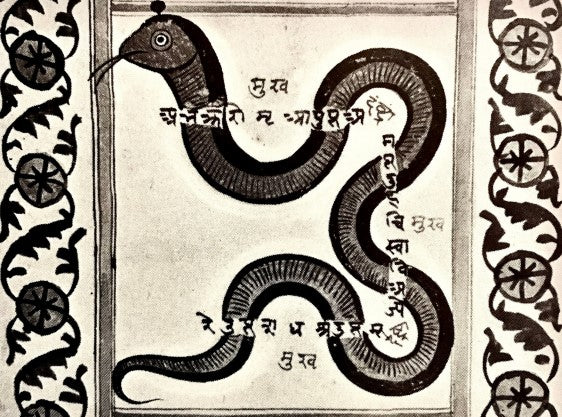Yoga ist eine alte Praxis, die Disziplin, Körperhaltung, Konzentration, Erleuchtung und mehr beinhaltet. Yoga wurde ursprünglich für die spirituelle Entwicklung zur Erlangung körperlicher und geistiger Gesundheit entwickelt und blickt auf eine tausendjährige, reiche Geschichte zurück.
Die Geschichte des Yoga reicht 5.000 Jahre zurück. Es wird angenommen, dass diese heilige Kunstform ihren Ursprung im alten Indien hat . Später wurde es von verschiedenen Ländern auf unterschiedliche Weise übernommen und von Generation zu Generation weitergegeben.
Lassen Sie uns in diesem Blog eine kurze Geschichte des Yoga in asiatischen und westlichen Kulturen erkunden und tiefer in die Yoga-Philosophie eintauchen!
Inhaltsverzeichnis
Der Ursprung des Yoga
Die 8 Ashtangas des Yoga
- Yama: Verhaltensregeln
- Niyama: Selbstdisziplin
- Asana: Körperhaltung
- Pranayama: Die Kunst des Atmens
- Pratyahara: Beherrschung der Sinne
- Dharana: Konzentration
- Dhyana: Meditation
- Samadhi: Erleuchtung
Die europäische Geschichte des Yoga
Kurze Geschichte des Yoga in den Vereinigten Staaten
Aktuelle Yoga-Trends
Schlussworte
FAQs
- Was ist die Geschichte des Yoga?
- Was sind die acht Glieder des Yoga?
- Was sind die spirituellen Vorteile von Yoga?
- Gibt es historisch gesehen neben Indien noch andere Kulturen, die Yoga praktizieren?
Der Ursprung des Yoga
Die vedischen Texte, die aus der indogermanischen Kultur stammen, wurden zwischen 3000 und 300 v. Chr. geschaffen und in vier Gründungstexten zum Ausdruck gebracht, den Wahrheiten, die großen Meistern des Urzeitalters offenbart wurden. Laut einem damals gefundenen Siegel, das eine Person in einer Yoga-Haltung zeigt, besteht die Tendenz, die Ursprünge des Yoga auf etwa 2000 v. Chr. zu datieren. Bei diesen Praktiken handelt es sich um Körperhaltungen, Rituale und Gebete (Mantras), die mündlich übermittelt werden und sich mit der Zeit weiterentwickeln kulturelle Umgebung.
Aus dem Jahr 700 v. Chr. stoßen wir auf die Upanisaden, Sammlungen philosophischer Texte mit einem zentralen Thema: dem grundlegenden Konzept eines Universums, das sich um ein höheres und ewiges Bewusstsein dreht . Yoga aus dieser Zeit wird als vorklassisches Yoga bezeichnet.
Die Bhagavad Gita, die Teil des berühmten hinduistischen Nationalepos Mahabharata ist, entwickelt klarere Vorstellungen über Yoga und enthält Beschreibungen von 18 Yoga-Formen, wie Bhakti Yoga oder Mantra Yoga.
Damals nahmen Traditionen Gestalt an und wir unterschieden sechs grundlegende philosophische Systeme, die Darshanas, zu denen Yoga und Sâmkyha gehören. Hier wird Yoga als eine Methode zur Befreiung des gesamten Wesens beschrieben, und Sâmkyha ist in enger Verbindung mit Yoga eine Evolutionstheorie, die sich mit der Gefangenschaft des Geistes und seiner möglichen Emanzipation befasst.
Inspiriert von diesen beiden Urtexten erscheint der erste grundlegende Text, die Sutras von Patanjali, zwischen 200 v. Chr. und 500 n. Chr. (ohne genaues Datum). Es sind die Grundlagen dessen, was wir in der Neuzeit als klassisches Yoga bezeichnen. Die 195 Strophen oder Aphorismen geben einen Leitfaden, indem sie acht Aspekte (Ashtanga) der Yoga-Praxis definieren.
Die 8 Ashtangas des Yoga
- Yama: Verhaltensregeln
- Niyama: Selbstdisziplin
- Asana: Körperhaltung
- Pranayama: Die Kunst des Atmens
- Pratyahara: Beherrschung der Sinne
- Dharana: Konzentration
- Dhyana: Meditation
- Samadhi: Erleuchtung

1. Yama: Verhaltensregeln
Yama repräsentiert eine Reihe ethischer Regeln innerhalb der Yoga-Philosophie. Die fünf verschiedenen Yamas, die im Yoga-Sutra beschrieben werden, sind Ahimsa (Gewaltlosigkeit), Satya (Wahrhaftigkeit), Asteya (Nicht-Stehlen), Aparigraha (Besitzlosigkeit) und Brahmacharya (Treue).
2. Niyama: Selbstdisziplin
Das Sanskrit-Wort niyama bedeutet „Regeln“. Die Niyamas und ihre Ergänzung, die Yamas, sind die vom Yoga vorgeschriebenen Praktiken und Aktivitäten für spirituelle Erleuchtung und ein gesundes Leben.
3. Asana: Körperhaltung
Yoga-Asanas sind Körperhaltungen oder Posen, die die Gelenke, Bänder und Muskeln des Körpers stärken und so zur Verbesserung von Kraft, Flexibilität und Gleichgewicht beitragen.
4. Pranayama: Die Kunst des Atmens
Pranamaya ist eine Atemkunst, die dazu dient, den Atem zu regulieren. Es ist ein Sanskrit-Wort, das aus „Prana“ und „Yama“ besteht und Lebensenergie und Kontrolle bedeutet.
5. Pratyahara: Beherrschung der Sinne
Pratyahara ist das fünfte Glied des Yoga und eine Grundlage für die Meditation. Es ist eine der am wenigsten bekannten Yoga-Praktiken. Die Meditationspraktiken in Pratyaha helfen dabei, alle fünf Sinne zu beherrschen. Es vermittelt die nötigen Fähigkeiten, um äußere Reize herauszufiltern.
6. Dharana: Konzentration
Im Sanskrit bedeutet Dharana „Konzentration“. Die Ausübung der Dharana-Praxis hilft, Ihren Geist auf einen einzelnen Gegenstand, Ort oder Konzept zu konzentrieren. Dies ist der sechste Zweig des Yoga Ashtanga, dessen Umfang enger ist als der von Dhyana.
7. Dhyana: Meditation
Das Wort Dhyana leitet sich von zwei Sanskrit-Wörtern ab: „dhi“ (Geist) und „yana“ (Bewegung). Dhyana beinhaltet im Gegensatz zu Dharana ein vollständiges Eintauchen. Dhyana bedeutet Meditation, die einen Zustand tiefer Gelassenheit bedeutet.
8. Samadhi: Erleuchtung
Samadhi ist der höchste Bewusstseinszustand, in dem sich individuelles und universelles Bewusstsein vereinen.
Diese Aphorismen sind leicht zu lesen, aber weniger leicht vollständig zu verstehen und regen zum Nachdenken, zur Diskussion und zur Meditation an. Ihr Wissen gehört zum „Muss“ des Praktikers! Der Tantrismus wurde um 500 n. Chr. in eher anarchischer Weise im Norden Indiens entwickelt.
Es ist eine Art Gegenstrom zum hinduistischen Normsystem, das auf Praxis und mündlicher Überlieferung beruhte. Tantra ist eine mystische Art, den Körper wertzuschätzen und ihn als Behälter göttlicher Energie zu begreifen. Gleichzeitig wird der weibliche Aspekt hoch geschätzt. In diesem Zusammenhang entwickelte sich die Praxis von Kundalini-Yoga und Tantra-Yoga unter Berücksichtigung des Gleichgewichts der männlichen/weiblichen Shiva/Shakti-Energien.
Um 800 n. Chr. konzentrierte sich Hatha-Yoga auf die Entwicklung des Körpers und gewann zunehmend an Bedeutung. Der Text, der es definiert, ist Hathayoga Pradipika, ein weiteres „Muss“ für Anfänger.
Die europäische Geschichte des Yoga
Um 1000 n. Chr. übersetzte Al-Biruni, ein arabischer Philosoph und Gelehrter, die Sutras von Patanjali ins Arabische und ermöglichte so die Verbreitung dieses Textes im Nahen Osten. Diese Lehren sowie bestimmte tantrische Techniken hatten Einfluss auf die Yogapraktiken im Sufismus.
Später beeinflusste der Sufismus die europäische Mystik, und es ist interessant, die Ähnlichkeiten zwischen der Symbolik der Illustrationen aus der Chemie und Illustrationen im Zusammenhang mit Yoga oder Tantrismus zu beobachten.
 Die europäischen Reisenden und Missionare des 16. Jahrhunderts bleiben eher Zuschauer eines unverständlichen Indiens und machen keinen Unterschied zwischen wahrer spiritueller Suche und Fakirismus. Erst gegen Ende des 19. Jahrhunderts öffnete sich die westliche Welt dem indischen und östlichen Denken.
Die europäischen Reisenden und Missionare des 16. Jahrhunderts bleiben eher Zuschauer eines unverständlichen Indiens und machen keinen Unterschied zwischen wahrer spiritueller Suche und Fakirismus. Erst gegen Ende des 19. Jahrhunderts öffnete sich die westliche Welt dem indischen und östlichen Denken.
Zu den Meistern, die Europa am stärksten beeinflussten, gehörten Sri Aurobindo, Swami Vivekananda, Maharishi und Sivananda. Die westliche psychologische Forschung begann sich für orientalische Visionen zu interessieren. In den 1930er Jahren hielt Carl Gustav Jung seine berühmten Vorträge über Kundalini Yoga. Dennoch stehen wir am Anfang eines Prozesses und die Interpretationen gehen nicht immer in die richtige Richtung. Mit den Studentenbewegungen in den 60er Jahren erlebte Yoga einen wahren Aufschwung und entwickelte sich zu einer meditativen Disziplin in Europa.
Kurze Geschichte des Yoga in den Vereinigten Staaten
Zu Beginn des 20. Jahrhunderts gehörten Swami Vivekananda, Paramahansa Yogananda und Indra Devi zu den ersten Meistern, die in die Vereinigten Staaten reisten, um Yoga und seine Philosophie zu lehren und weiterzugeben. In den 60er und 70er Jahren folgten ihnen Meister wie Muktananda und Desikachar, Pattabhi Jois und Iyengar, denen Ashtanga-Yoga und Iyengar-Yoga zu verdanken sind.
Yogi Bhajan, der Begründer des Sikh Dharma, gehört ebenfalls zu diesen Meistern und ist für die Lehre des Kundalini-Yoga verantwortlich. Heute gibt es in den Vereinigten Staaten und Kanada viele Zentren, Schulen und Aktivitäten mit einem vorherrschenden Interesse an körperlichem Yoga. Power-Yoga (Ashtanga) liegt derzeit voll im Trend, es gibt aber auch Eigenheiten wie Doga, Hunde-Yoga usw.
Aktuelle Yoga-Trends
Westler beginnen langsam, sich die Yoga-Kultur anzueignen. Auch wenn unsere Mentalität und unsere Traditionen immer noch tief in einer jüdisch-christlichen Kultur verwurzelt sind, konfrontiert uns die Weltoffenheit immer mehr mit unterschiedlichen Glaubenssystemen, und die Mischungen erfolgen ohne allzu große Bedenken. Allerdings sind Grundkenntnisse verschiedener Glaubenssysteme und Philosophien erforderlich, um verwirrende Vermischungen zu vermeiden!
Heutzutage stellt die Ausübung von Yoga einen geschätzten Ersatz für unsere Religionen dar, die in bedeutungslos gewordenen Traditionen eingefroren sind. Tatsächlich kann Yoga als Ergänzung zu jeder Religion erlebt werden und ermöglicht eine konkrete und tragfähige Annäherung an die ultimative Realität. Für diejenigen, die sich mit keiner Religion wohl fühlen, ermöglicht Yoga, die eigene Spiritualität durch Erfahrung zu leben.
Der letzte Niedergang hat zu einer weltweiten Explosion mit Millionen von Yoga-Praktizierenden aller Art geführt, wobei die Tendenz zur Hatha-Yoga-Praxis (auf körperlicher Betätigung basierend) vorherrscht. Sogar Indien wurde vom westlichen Yoga-Tsunami berührt und wurde sich dieses tief in der alten indischen Tradition verwurzelten Schatzes wieder bewusst.
Schlussworte
Ich hoffe, dass diese Yoga-Geschichte für Sie nützlich sein wird, aber bitte bedenken Sie, dass sie eine viel reichhaltigere und komplexere Geschichte zusammenfasst. Ich hoffe, es wird Sie dazu inspirieren, mehr über die Geschichte des Yoga von der Antike bis zur Neuzeit zu erfahren.
Bei Breath of Fire haben wir Yoga seit langem als Lebensphilosophie und Lebenskunst integriert. Alle unsere Kleidungsstücke werden unter diesem Gesichtspunkt hergestellt.
Bitte hinterlassen Sie Ihre Gedanken zu diesem Blog im Kommentarbereich unten!
Sei in deiner Stärke – Lia.
FAQs
Was ist die Geschichte des Yoga?
Yoga ist ein Sanskrit-Wort, das vom Begriff „Yuj“ abgeleitet ist und „vereinen“ bedeutet. Es ist eine Kunstform, die aus Atemtechniken, Meditation, richtiger Ernährung und Körperhaltungen besteht. Es wird angenommen, dass Yoga vor etwa 5.000 Jahren während der Indus-Zivilisation in Nordindien entstanden ist.
Was sind die acht Glieder des Yoga?
Der Begriff Ashtanga besteht aus zwei Sanskrit-Wörtern: „Ashta“ bedeutet acht und „Anga“ bedeutet Gliedmaßen und bezieht sich auf die acht Gliedmaßen des Yoga. Ashtanga ist die Klassifikation des klassischen Yoga, die einer Reihe von Prinzipien für ein sinnvolles und zielgerichtetes Leben dient. Die Ashtangas im Yoga sind Yama, Niyama, Asana, Pranayama, Pratyahara, Dharana, Dhyana und Samadhi.
Was sind die spirituellen Vorteile von Yoga?
Yoga ist die Kunst und Wissenschaft eines gesunden Lebensstils. Es kommt einem Yoga-Praktizierenden spirituell zugute, indem es Harmonie zwischen Geist und Körper herstellt. Zu den spirituellen Vorteilen von Yoga zählen eine verbesserte Konzentration, ein gesteigertes Selbstvertrauen, geistiger Frieden, Selbstregulierung und ein höheres Bewusstsein.
Gibt es historisch gesehen neben Indien noch andere Kulturen, die Yoga praktizieren?
Der Begriff Yoga kommt ausschließlich aus dem Osten. Dennoch wurde Yoga auch von buddhistischen Asketen praktiziert, etwa den Böns in Nepal, Tibet und anderen Ländern, aber auch von christlichen oder muslimischen Asketen wie den Sufis. Über die Kulturen hinaus gibt es zahlreiche körperliche Praktiken, weil der Mensch zu allen Zeiten und in allen Religionen versucht hat, sich zu erheben und seine Materialität und Zeitlichkeit zu überwinden.






